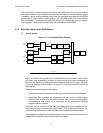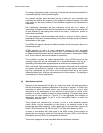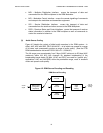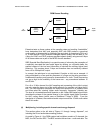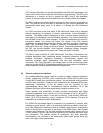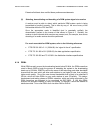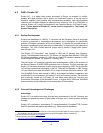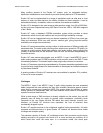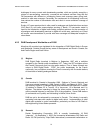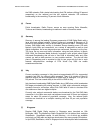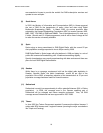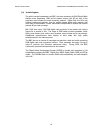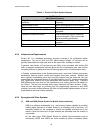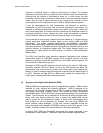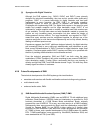DIGITAL RADIO GUIDE TERRESTRIAL TRANSMISSION SYSTEMS - DAB
20
Many ancillary aspects of the Eureka 147 system, such as multimedia delivery,
distribution interfaces and user interactivity are also formally defined in ETSI standards.
Eureka 147 can be implemented for a range of applications such as wide area or local
delivery of audio and data services for mobile, portable and fixed reception. It can be
delivered terrestrially, via satellite, cable or a mixture of terrestrial and satellite.
Eureka 147 is designed to be used across a wide spectrum range, from 30 to 3000 MHz,
but has only been implemented using VHF Band III and the 1452 to 1492 MHz segment
of the L Band.
Eureka 147 uses a wideband COFDM modulation system which provides a robust
transmission which is multi path resilient and can provide high availability coverage.
Eureka 147 can be implemented using on channel repeaters in SFNs or low power gap
fillers and extenders. SFNs may also provide “network gain” giving improved service
availability over single channel services.
Eureka 147 can accommodate a varying number of audio services of differing quality with
associated data. The audio quality can range from simple mono speech to CD quality. An
increase in quality requires higher data rates for each audio service, hence reducing the
number of services that can be delivered. Data can also be delivered independently of
the audio services.
Eureka 147 uses mature technologies such as MPEG 1 Layer II and MPEG 2 Layer II
audio coding systems and COFDM modulation, which are also used in the DVB T video
broadcasting standard. This should lead to cheap single chip solutions for receivers.
Eureka 147 has been extensively standardised by European standards organisations and
it would be fairly straightforward for these standards to be adopted as Australia standards
by Standards Australia.
A growing number of Eureka 147 receivers are now available for portable, PCs, mobiles,
in car and in house reception.
Challenges
The MPEG 1 Layer II and MPEG 2 Layer II audio coding systems are now somewhat
dated (compared with new systems) but they offer excellent robustness against channel
errors due to unequal error protection (UEP). The system allows for inclusion of newer
coding systems as independent data, but DAB receivers would need to be adapted or
replaced to receive these services.
While a wide range of DAB receivers is already available on the market, they are still
generally seen as being too costly for general public acceptance, particularly when
compared to the very cheap AM and FM radios that many listeners currently use.
However, as Eureka 147 services have expanded, the cost of receivers have
considerably dropped in price.
Eureka 147 requires services to be multiplexed together before transmission. All audio
programs and data services in a given Eureka 147 channel will therefore have similar
coverage and reception quality.
The standard capacity of Eureka 147 multiplexes means that conversion would require
existing services to be grouped into blocks of 6 or more services per multiplex, all of
which would then cover the same area. In a conversion model, this would pose



